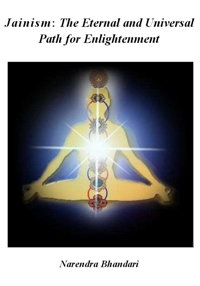Fig. 1.1
 |
Fig. 1.1 The evolutionary record of species on Earth, beginning with single celled species to multi celled species, to marine species, mobile animals, plants, mammals and flying species to humans. Predecessors of Humans (Hominids) first appeared on the Earth about 6 million years ago, rapidly evolving in to Man (Homosapien) who first appeared about 200000 years ago. |
Fig. 1.2
 |
Fig. 1.2 The Phylogenetic Tree indicating common root, [Last Universal Common Ancestor, LUCA] for all plant and animal kingdoms on the earth. |
Fig. 6.1
 |
Fig. 6.1 The interaction between the knower (jnātā) and the object (Jneya) via knowledge (jnān) indicating that an observation modifies both the knower and the object, making it impossible to know their “state” completely at any instant by any observation. |
Fig. 6.2
 |
|
Fig. 6.2 Various chakras in the body (right) correspond to various glands (left), which can be activated by practicing various yogasans, Seven main Chakras are shown. |
Fig. 7.1
 |
Fig. 7.1. Macro to the micro universe showing the sequence from the gross to the subtle components of nature. Sixty Elementary Particles (Quarks, Leptons and the Force carriers, together with their antiparticles), known to be the building blocks of matter are arranged in the box on lower right according to their attributes. |
Fig. 7.2
 |
Fig. 7.2 The double slit experiment showing that photons (or electrons) act as particles when they are observed by particle detectors (D), giving the characteristic spots on the photographic plate (above), and waves when they go unobserved (below) giving rise to the well known interference pattern due to waves, proving the duality of behaviour of elementary particles. |
Fig. 7.3
|
Fig. 7.3 Pictorial representation of principle of complementarity, indicating that contrary is complementary, based on Chinese concept of Yin and Yang. This was used as coat of arms by Neils Bohr to describe phenomena in Quantum mechanics. |
Fig. 8.1 a, b
 |
Fig. 8.1 a, b Universes with closed (W0 > 1), flat (W0 = 1) and open (W0 < 1) |
Fig 8.2
 |
Fig 8.2 Jain Cosmic periodicities |
 Prof. Dr. Narendra Bhandari
Prof. Dr. Narendra Bhandari
